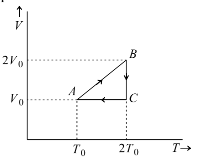Browse by Stream
-
Engineering and Architecture
Exams
Colleges
Predictors
Resources
-
Computer Application and IT
Quick Links
Colleges
-
Pharmacy
Colleges
Resources
-
Hospitality and Tourism
Colleges
Resources
Diploma Colleges
-
Competition
Other Exams
Resources
-
School
Exams
Top Schools
Products & Resources
-
Study Abroad
Top Countries
Resources
-
Arts, Commerce & Sciences
Exams
Colleges
Upcoming Events
Resources
-
Management and Business Administration
Colleges & Courses
Predictors
-
Learn
Law Preparation
MBA Preparation
Engineering Preparation
Medical Preparation
-
Online Courses and Certifications
Top Streams
Specializations
- Digital Marketing Certification Courses
- Cyber Security Certification Courses
- Artificial Intelligence Certification Courses
- Business Analytics Certification Courses
- Data Science Certification Courses
- Cloud Computing Certification Courses
- Machine Learning Certification Courses
- View All Certification Courses
Resources
-
Medicine and Allied Sciences
Colleges
Predictors
Resources
-
Law
Resources
Colleges
-
Animation and Design
Exams
Predictors & Articles
Colleges
Resources
-
Media, Mass Communication and Journalism
Colleges
Resources
-
Finance & Accounts
Top Courses & Careers
Colleges
Get Answers to all your Questions


- #Physics
- #Thermodynamics
- #National Eligibility Cum Entrance Test
- #National Eligilibility Cum Entrance Test
- #Class 11
- #Medical
Figure shows a cyclic process ABCA for an ideal diatomic gas. The ratio of the heat energy absorbed in the process A → Bto the work done on the gas in the in the process B → C is
Option: 1
Option: 2
Option: 3
Option: 4
Answers (1)

In the process A → B, V is proportional to T. Hence pressure P remains constant. Therefore, heat energy absorbed in this process is
Process B → C is isothermal in which the gas is compressed. Hence, work done on the
gas in this process is
View full answer
NEET 2024 Most scoring concepts
- Just Study 32% of the NEET syllabus and Score up to 100% marks
Trending Articles/News
Latest Question
- Draw ray diagram in each of the following cases to show what happens after reflection to the incident ray when (a) it is parallel to the principal axis and falling on a concave mirror.
- reflection to the incident ray when (a) it is parallel to the principal axis and falling on a concave mirror. (b) it is falling on a concave mirror while passing through its princip



